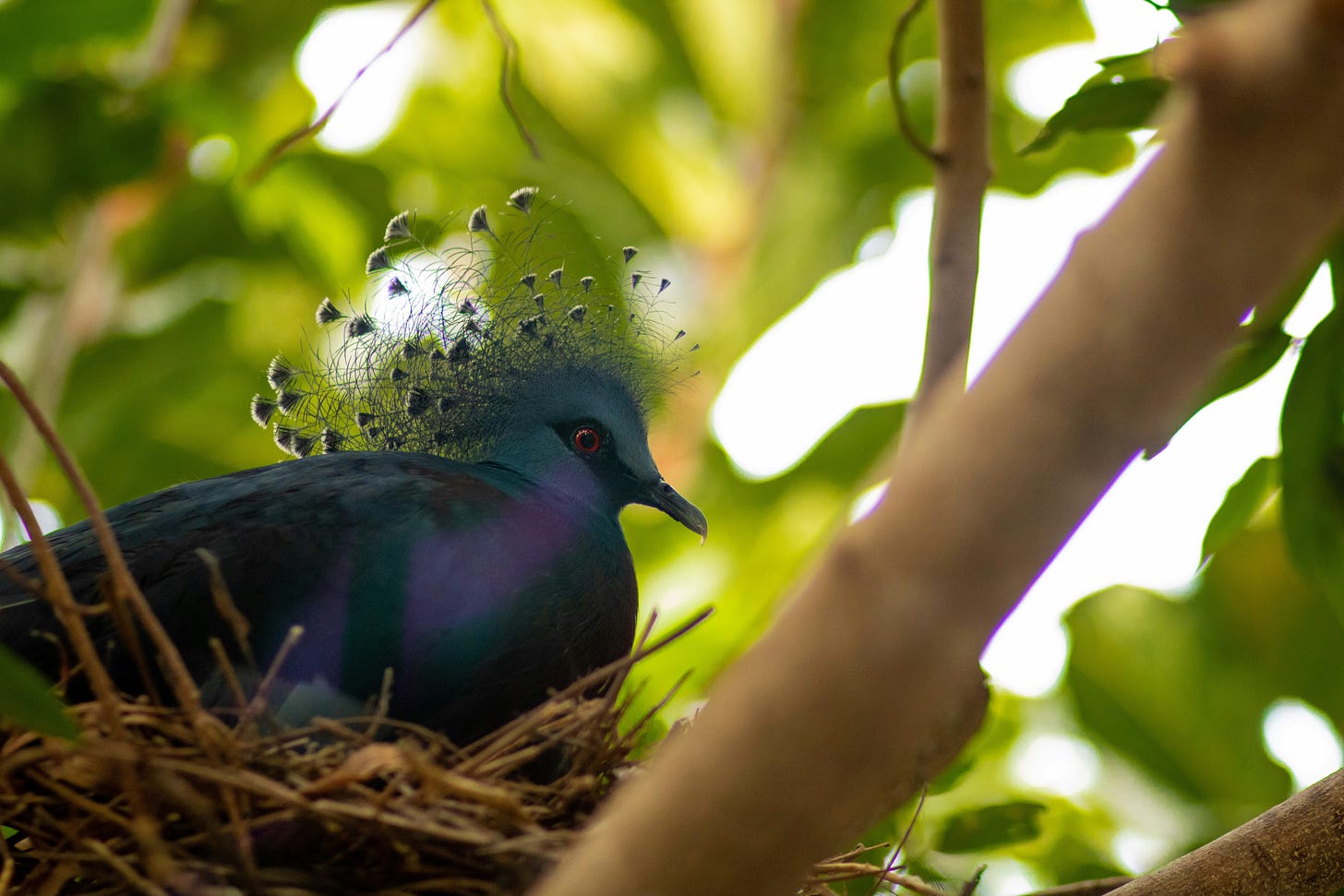To Read a Poem Quickly and Easily
Think of a Bird in a NEST. For those who feel they don't know how to read poetry.

I am popping on Substack —ever so briefly— with timely information that should be helpful to certain readers today, but now that I think of it this could be of use to others, too.
I say timely because tonight at 9pm ET is doing a close reading of Seamus Heaney’s “Blackberry-Picking” for paid subscribers. Also, just moments ago my friend and classmate,
, sent me a message, and we drifted into this conversation about how to read a poem very quickly and easily, riffing on a post I wrote a over a year ago about how to read a long, complicated novel very quickly.I used this technique all last week when I was in the mountains of North Carolina with my friends from the Close Reads podcast community. We were doing a weeklong deep dive into Jane Austen’s Pride and Prejudice.1 One of our hosts,
, started off every morning with a poem for us to analyze, which was a great warm up for the rest of the day’s discussion. Here is the technique I basically used to read every poem.The Bird in the NEST
N is for Narrative
Of course, not every poem is a narrative poem, but you can tell a story about what a poem literally saying. Who is the speaker? Is this written in first person or third person? Can you summarize what is going on in the poem to a friend?
E is for Emotion
How did the poem make you feel? Do you feel differently at the end of the poem than you did from the beginning? Would you recite this poem to someone who is having a hard time? Is this a sad poem? Hopeful poem? Is it spiritual or religious?
S is for Symbols
Next look for metaphors, similes, and images. What kind of images were used by the poet? What do you think they mean? Is there a theme to the images? Are they mythical or realistic? Are they natural or technological?
T is for Technique
Look at how the poem is crafted. Is it free verse or formal? How are meter and rhyme used in the poem, if at all. What words are stressed more than others. Circle periods and special punctuation. Look at sentence length. Do you see any repetition of words or grammatical phrasing? Are questions literally being asked in this poem? Think about why the poet made their particular choices. Are the words monosyllabic or polysyllabic? How does this affect how the poem is read?
The Bird
Who created the nest? The bird. The poet. What do you know about the soul that crafted this poem? You can admire a nest without the bird, but I think it is better to know something about who made it.
In what era did the poet live? Who did they live with? When did they die? What wars were being fought at that time, and were they affected by them?
And finally its Song
Remember to read the poem out loud. If you can find multiple people to read it then all the better. Can you find the music in the poetry? This is a genre that began as an auditory art with aspects that cling to memory. Ancient rhapsodes recited long tracts of metered verse for audiences. Since poetry has performative origins it should sound beautiful and memorable.
I have now run out of time and my family is expecting dinner (hurray for leftovers!) so that is all. Please feel free to leave me feedback in comments. Corrections and other advice is also welcome.
Last year we covered Fyodor Dostoyevsky’s The Brothers Karamazov and the year before that we read Evelyn Waugh’s Brideshead Revisited.




Zina, just beautifully done. Elegant, humane approach. Chris
Excellent technique! I just read it out to my daughter and she loves the method. We will try this with our daily poems.